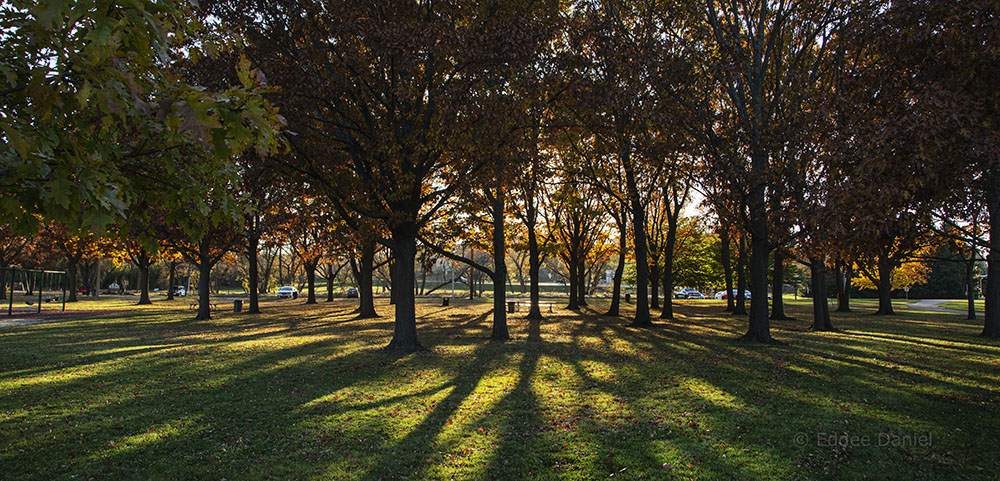
Kulwicki Park: An unlikely wilderness
November 8, 2020 | Topics: Places, Stories
Story and photos by Eddee Daniel
Bushwhacking through a dense tangle of buckthorn, I suddenly emerge into the light and nearly fall down a steep bank that drops directly into a narrow but deep-looking river. Thickets similar to the one I just escaped line the other bank in both directions; numerous logs and the crowns of entire trees lie willy-nilly across the water, like pick-up-sticks. Where am I? How do I reconcile these jungle-like surroundings with the staid park laid out with playing fields that I started in?

Although the little waterway that runs through the middle of it is called “Wildcat Creek,” Kulwicki isn’t at first glance the kind of park likely to entice a lover of wilderness (urban or otherwise) like me. The first and only time I stopped in here before now I spent just a minute or so glancing around at the several softball fields and expanses of lawn around them before I turned around and left. (For the record, I have nothing against softball, or any other sport typically played in local parks, and I’m happy to know there are places like this for people who enjoy them. However, I am personally drawn to parks with more natural landscapes.)
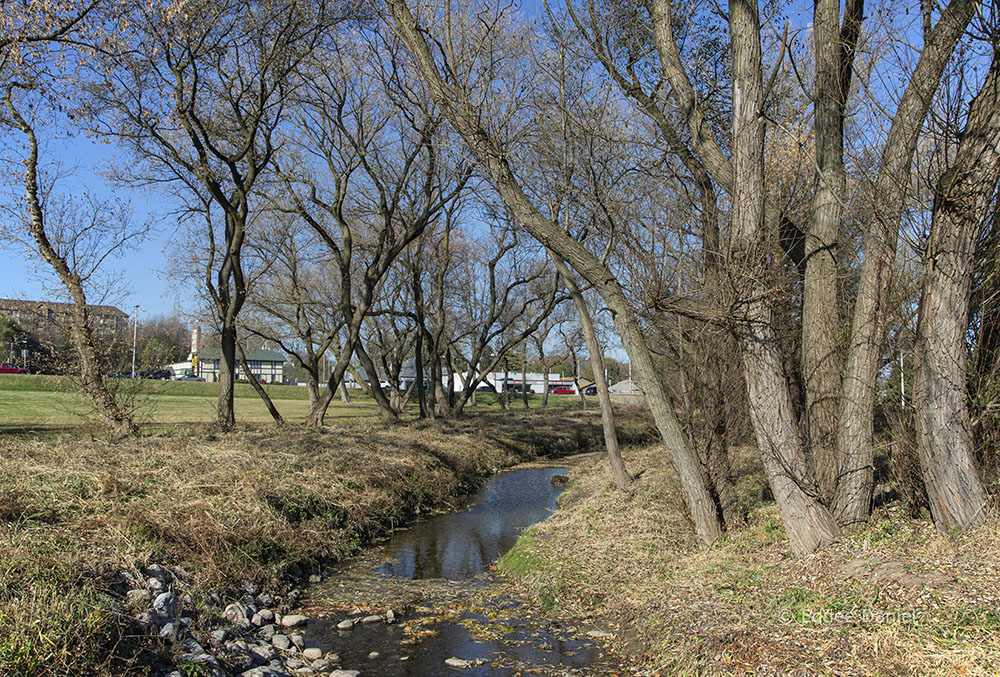
In fact, it was Wildcat Creek that drew me back to the park. Well over a month ago, I’d read in the Root-Pike WIN newsletter about a stream restoration project on the creek and ever since have had it on my to-do list to check it out. Perhaps when the autumn colors were peaking, I thought, would be a good time to visit and get a photo or two. Well, the cold snap that settled in all week eased a bit today and I needed to get out of the house, stretch my legs, and breathe some fresh autumn air. I figured it’s now or never for Kulwicki, languishing on my to-do list.
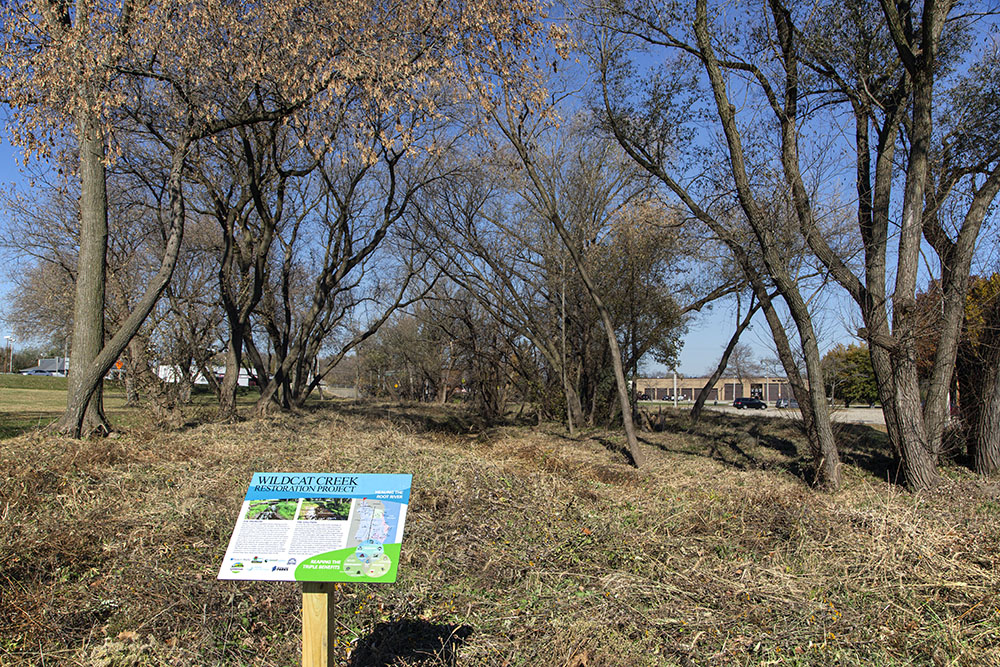
As soon as I pull into the parking lot I see that I’m too late. While there is a lovely grove of oaks on one side of the lot, the willows along the creek opposite have already shed most of their leaves. Also, the diverse native grasses and wildflowers that were planted along the edges of the creek as part of the restoration project, recently mowed, are looking drab and unkempt. Altogether, these things make it especially challenging to compose a compelling image of the gently meandering creek, sandwiched as it is between the parking lot, a commercial strip, and Highway 100. On the up side, I am happy to report that the restoration site, clearly identified with educational signage, looks completely natural (as you can see from the photos above). While that may sound unremarkable, I’ve seen some stream “restoration” projects that look far less natural—especially those featuring massive amounts of riprap or even wire-enclosed gabions.
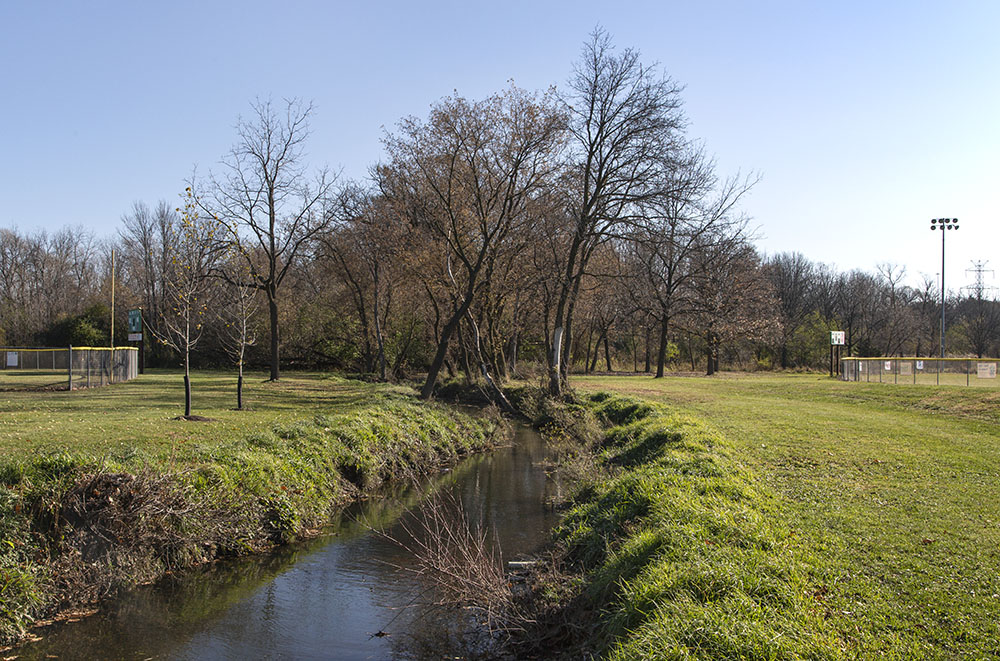
I decide it’s time to take that walk. I glance at the rich reddish browns of the oaks sheltering the pastoral picnic area next to the parking lot, see potential there for a shot or two, but turn and head for the wilder side of the park instead. I follow the little creek between the playing fields until the mown grass ends abruptly. A selvedge of taller grass separates me from the woodland beyond. Peering into it feels a bit like looking down the rabbit hole after the White Rabbit has disappeared. Perfect.

I expect to find a trail leading into the woods, but there isn’t one. The creek is choked with logs and sticks of all sizes, the water gurgling invisibly underneath. I step carefully over downed trees and part a dead sea of dried garlic mustard stalks. A small clearing contains the remnants of a crude encampment, the ragged, skeletal remains of a tent bolstered by a tepee of toppling sticks. I’d like to think this was the work of local children, a play fort for fertile imaginations. More likely a homeless shelter, since kids would probably establish a trail leading to it. Various discarded items nearby reinforce this surmise.
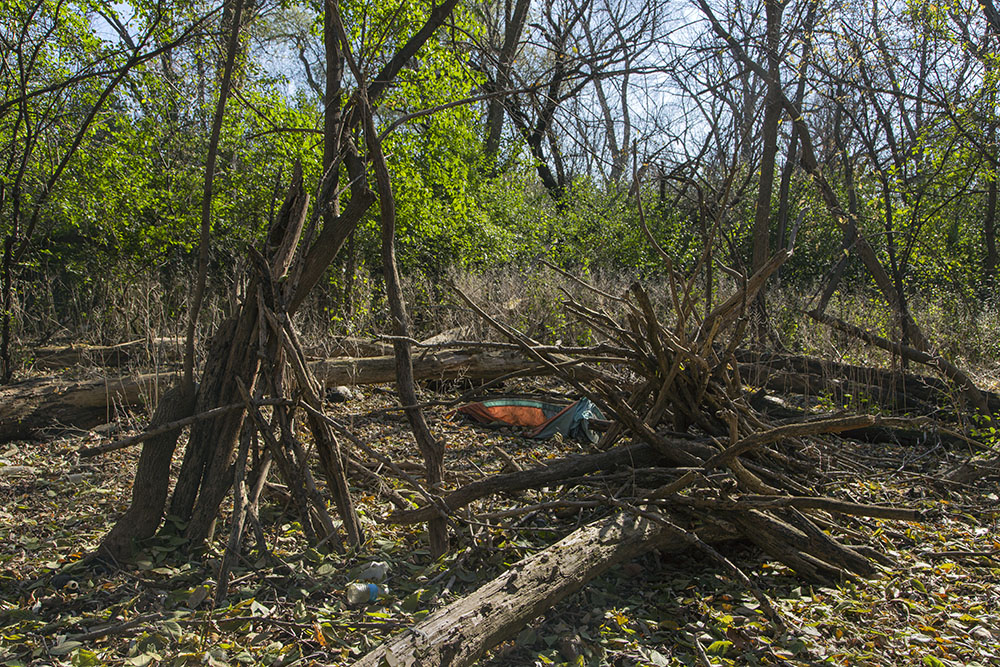
A muddy deer track leads me past a small pond, through a damp but passable wetland, and into more buckthorn. The Root River must lie somewhere ahead as I know from the map that Kulwicki Park butts up to the Root River Parkway. Plunging through the buckthorn, this is when I find and almost fall into the river.
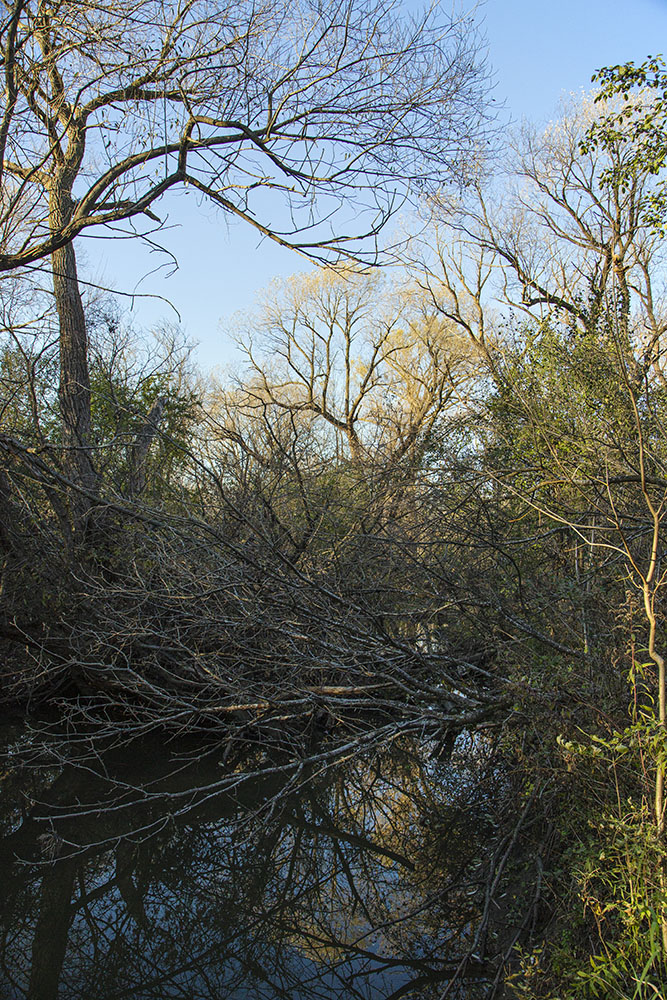
I look for a fallen log sturdy enough to walk on. I’ve gotten too near the Walmart Supercenter for my liking and the far side of the river is appealingly wild. When I do find a stout log and cross I discover that the other side is in fact uncomfortably wild, the river bank impassable with logs and tangled underbrush. And still no trail of any sort. Pushing through more buckthorn, I head east towards where I know the Oak Leaf Trail to be.
A solitary white-tail deer stops browsing to stare at me through the trees. I stop and stare back. We observe each other for ten minutes or so, I waiting for an opportunity to get a shot of it, which doesn’t materialize. I can only imagine what it is waiting for; me to leave, I expect. Or to approach, in which case it would disappear. I do finally leave, pushing on through to the Oak Leaf Trail. It is silent and empty in both directions.
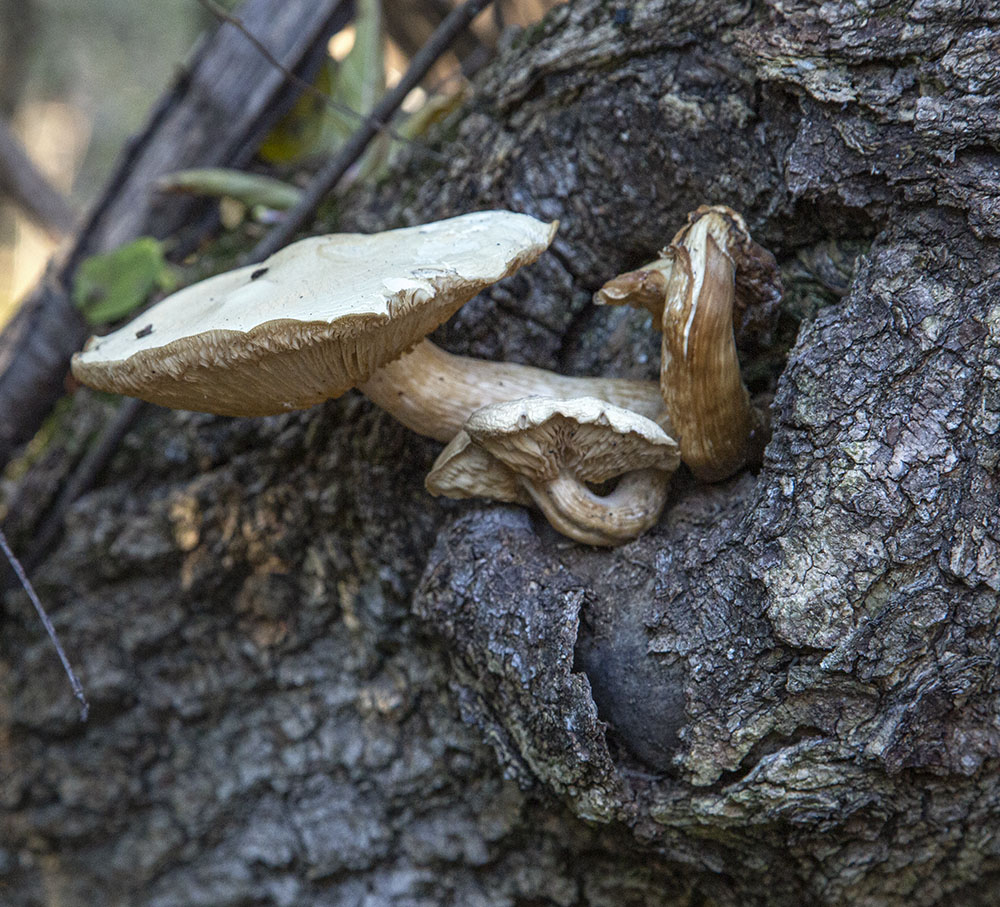
The pavement leads north to Cold Spring Road and then west to Kulwicki—the easy way back, although longer. But before I reach Cold Spring I discover a trail leading back into the woods and toward the river. Never one for the easy way when there’s more wild land to explore, I take the trail. Although it peters out in a wetland meadow, I slog forward. The scree of a hawk adds poignancy to my difficult progress. It calls twice, three times, from somewhere unseen above me. Finally, I see it when it flies off. Small, maybe a kestrel or a juvenile. Do kestrels have the same cry as other hawks, I wonder?

Bushwhacking back to the river, I find another log to cross. And a lovely view from the middle of twin waterways merging, the tall black willows lining them, tunnel-like, lit by the low, nearly setting sun. At the ends of the tunnels I can make out traffic on Cold Spring Road.
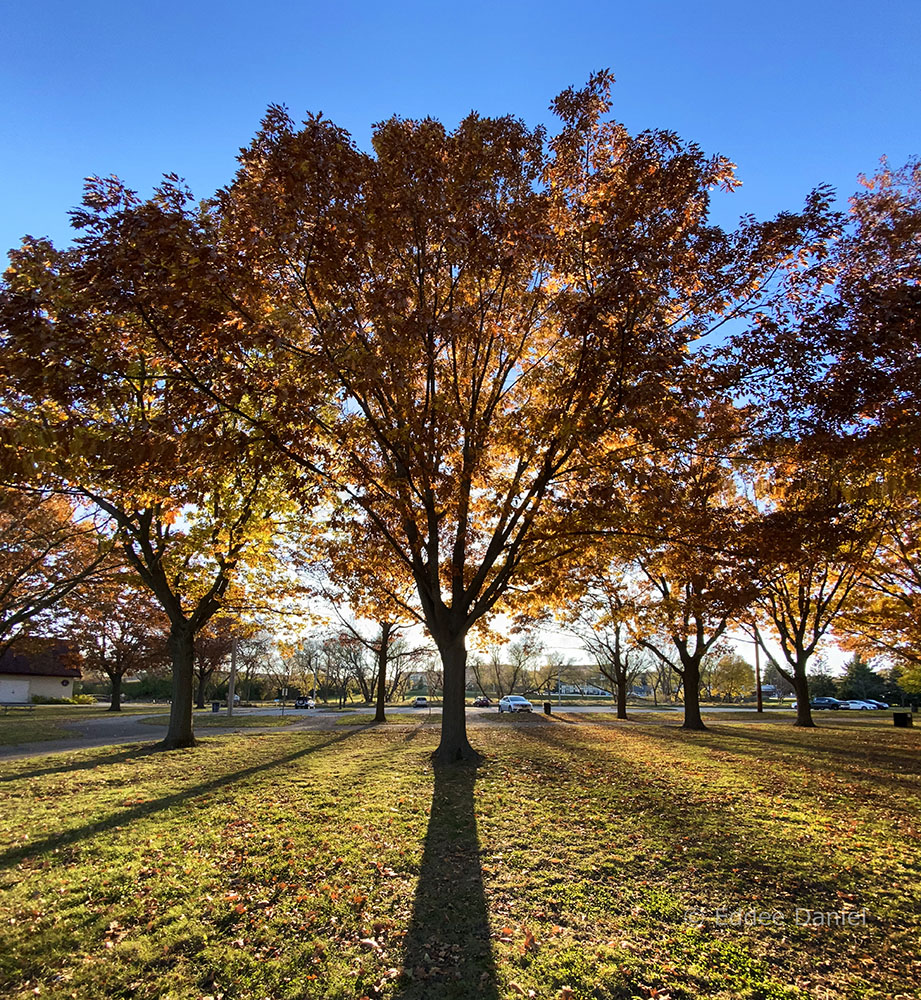
Returning finally to Kulwicki from the east, I pass by a sign that informs me I have been exploring the Wimmer Wetlands. Then, just before I get back to my car, I discover gold. Almost literally. My circuitous route has led me back to the oak grove and picnic area. The trees that I had eschewed earlier are now, from this vantage, even more resplendent backlit in golden and red-brown tones by the setting sun. A favorite quote rises from the depths of my unconscious mind:
“Sometimes it’s necessary to go a long distance out of the way
in order to come back a short distance correctly.”*
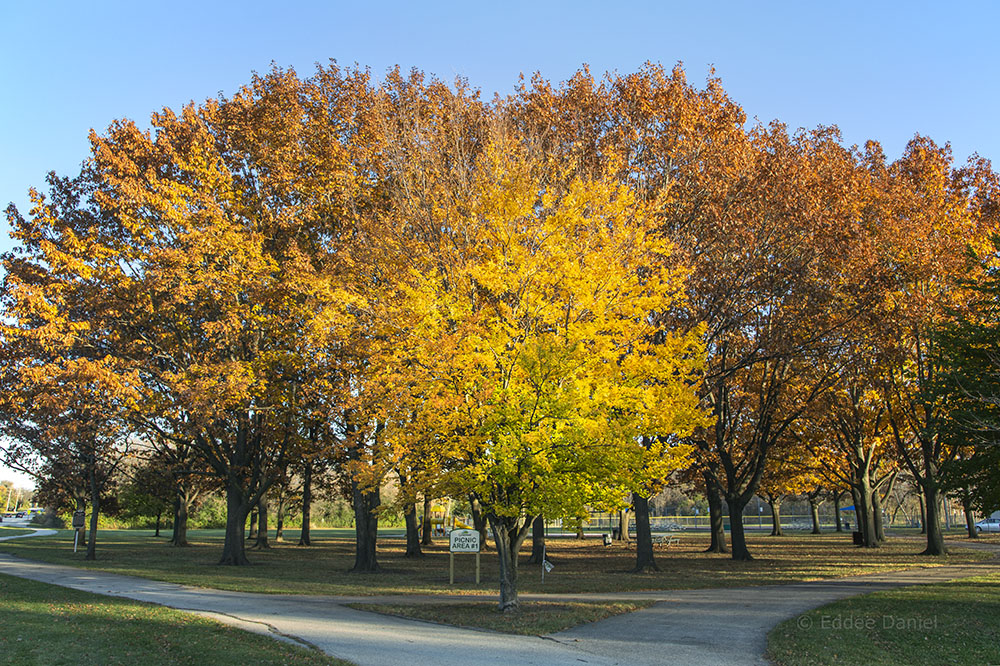
I work my way through the oak grove in delight, taking more photos in moments than I have throughout my hour of exploration, reminded of my own lessons to photography students over the years: Be open to the experience, free of expectations. You may discover what has been in front of you all along.
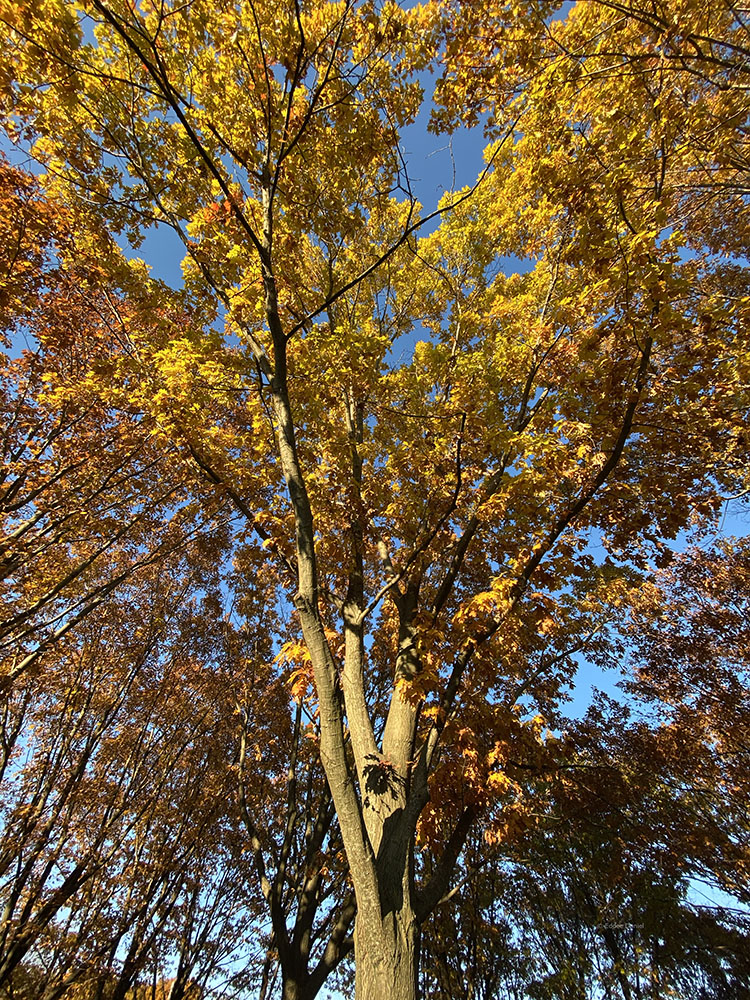
* From “The Zoo Story,” by Edward Albee.
Eddee Daniel is Project Director of A Wealth of Nature for Preserve Our Parks.

